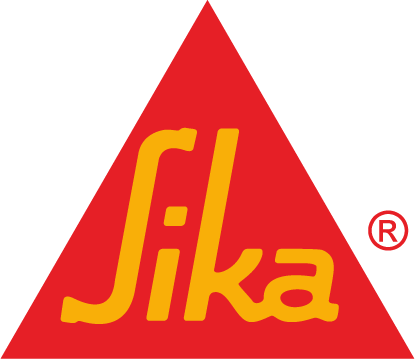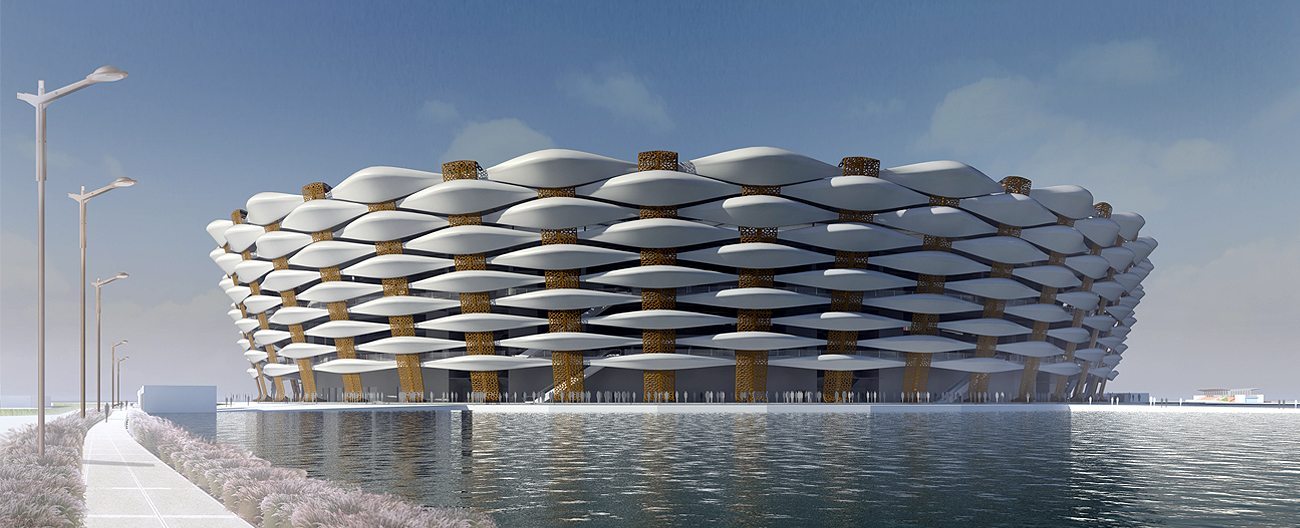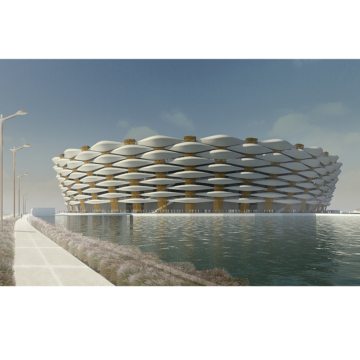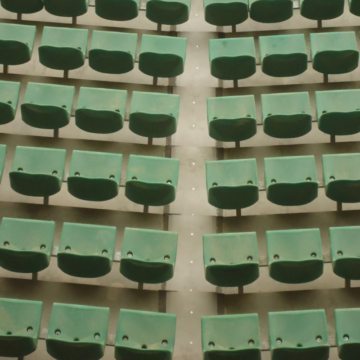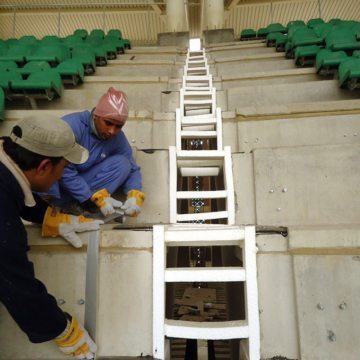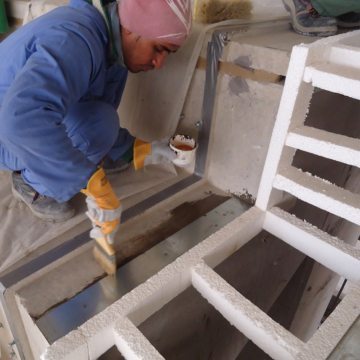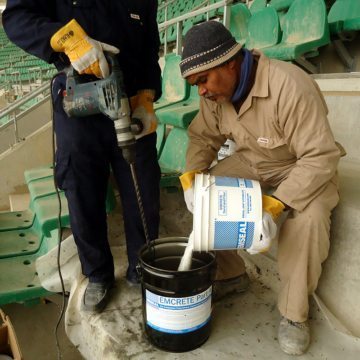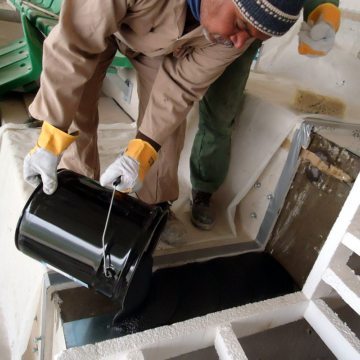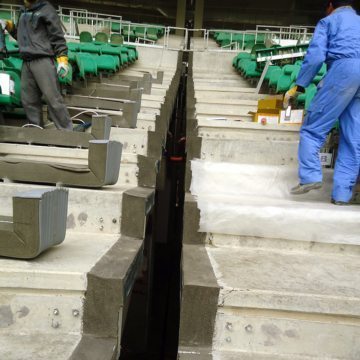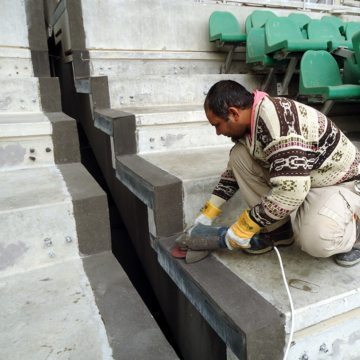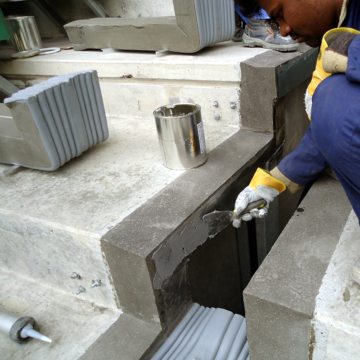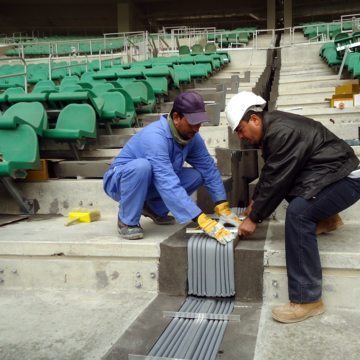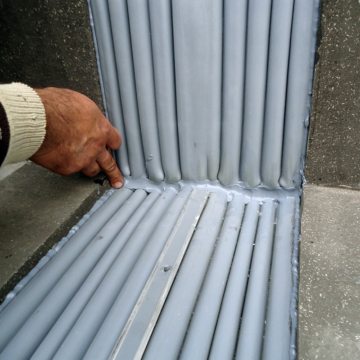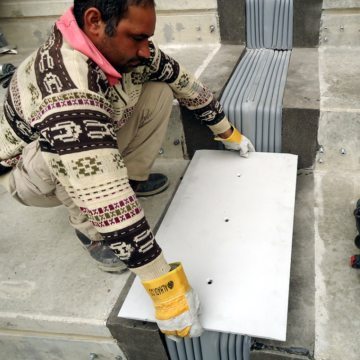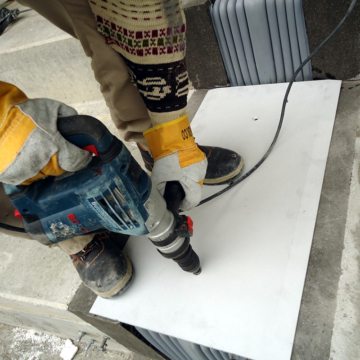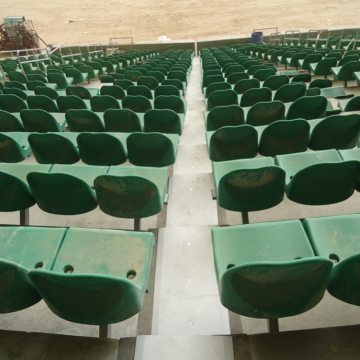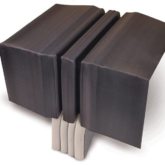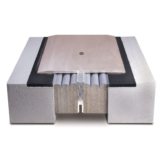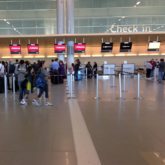Basra Sports City Soccer Stadium, Iraq
Iraq
Date: 2012, 2013
Basra Sports City Soccer Stadium gets expansion joints equal to its bold design
BASRA, Iraq–Part of a bold vision of reconstruction, the Basra Sports City complex in Basra Iraq will feature this spectacular $550 million, 65,000-seat, FIFA (international soccer) and Olympic (track and field) compliant stadium. Part of a 360-acre athlete training, housing and competition complex, the stadium is built in geography and on geology that dictated the need for substantial seismic stadium expansion joints up to 16-inches (400mm) wide.
With design by 360 Architecture and structural engineering by Thornton Tomasetti, bridging and sealing these large (16-inch nominal) seismic expansion joints fell to EMSEAL. The task is being accomplished using SJS–Seismic Joint System featuring factory-fabricated tread and riser assemblies. Each transition assembly was custom produced in our Toronto facility to field measurement provided by the contractor and shipped to the site in Iraq for installation according to a numbered plan.
The finished product beautifully integrates into the stadium. The top of the cover plates and cover plate screws of the SJS System are seen down the center of this photo.
Structural expansion joints are designed openings within a structure necessary for accommodating movements.
These movements are caused by thermal changes, wind, dynamic loading and unloading, and seismic forces.
Because expansion joints bisect the entire structure, they are essentially a gap through every element of the building–floors, walls, foundations, roofs, bathrooms, suites, waterproofing, and structural supports. As such, these gaps through the building must be made watertight and insulated while at the same time must accommodate movement and traffic over the joint material.
Installation training of the project manager and foreman took place in EMSEAL’s Boston-area headquarters. A full-size, custom mock-up of a tread-riser-tread assembly with joint sizes to match those in Basra was assembled in our training center.
The contractor, and project engineer from designer 360 Architecture, were taken through a step by step training of the steps from preparation to completion. These steps were then followed in the field and shown in the following image
Joints formed to receive Emcrete nosing material.
Blockouts primed with Emprime.
Emcrete sand and fiber aggregate added to resin and mixed.
Emcrete elastomeric nosing material poured into blockouts.
The Emcrete provides a watertight, sound-absorbing, leveling surface for the SJS cover plates. By grinding high spots, the plates can be made to sit completely flat and free of rocking.
The next factory-fabricated tread/riser transition assembly is installed to mate with the previous one. Each assembly has a factory-formed and silicone coated pitch plane in the back of the tread piece. This mates to a factory-coated miter in the “foot” of the riser section of the next piece. The result is a ship-lapped and sealed, watertight transition between each section.
The finished installation is aesthetically compatible, continuity of seal through the changes in plane and direction is maintained, and the SJS System and Seismic Colorseal to be installed in the field perimeter knee walls ensure watertightness, while accommodating joint movement free of tensile stresses within the expansion joint sealants and free of any hard, brittle, noisy, metal-to-concrete anchors or connections.
In stadium concourses, the SJS System handles the high point loads of small-wheeled delivery carts; ice-filled, food and beverage concession wagons fork lifts, utility lifts and of course the millions of footfall fans per game.
The entire SJS System is non-invasively anchored. Because the cover plates are anchored to the foam-suspended central spline of the SJS System, there are no metal contacts into the adjacent concrete. And, because the cover plates ride on a cushion of EMSEAL’s tough, resilient, but flexible and sound attenuating polyurethane, Emcrete nosing material, the SJS System is not only watertight but arguably the quietest seismic expansion joint available as well.
Revenue loss in affected concession areas, damage to equipment in storage rooms, disgruntled athletes and suite patrons, and exorbitant repair costs are all consequences of leaks at expansion joints.
Elimination of these problems in new sports, assembly, convention and performing arts venue construction as well as in retrofit of existing structures is a central focus of EMSEAL’s.
The company’s unique approach to sports facility expansion joint treatment combines innovative materials technologies with a fresh look at the roles of owners, designers, general contractors, manufacturers and subcontractors, in achieving trouble-free expansion joints.
The approach is grounded in an integrated, collaborative process centered on joint treatment that requires all of these parties to think, design, detail, specify, construct, fabricate, and install three-dimensional solutions.

